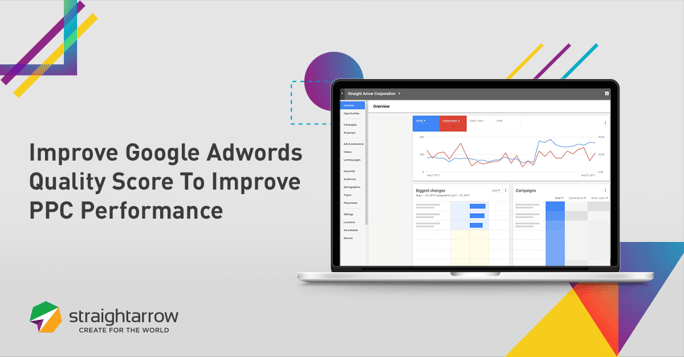
Pay-per-Click (PPC) advertising is typically seen as the paid complement to organic SEO. While paying for ads—or bidding for keywords, to be precise—is essential to this kind of search engine marketing, it’s not the determining factor for success. For that, quality still comes out on top.
You can find a numerical representation for quality in the Google AdWords Quality Score, which represents a weighted combination of:
- The relevance of each keyword to its ad group
- The relevance of the landing page linked to
- The relevance of the ad copy
- An ad’s clickthrough rate (CTR)
- Your account’s historical AdWords performance (where applicable)
The weight of each factor in the Quality Score is unconfirmed, but it is known that CTR is the most important. Furthermore, the Quality Score overall has a bigger impact on your overall ad rank than the amount you bid on keywords.
Ad rank, meanwhile, is what determines your ad’s visibility on specific SERPs. It’s how Google decides how high up on the page your ad should be, or if it’s relevant enough to show at all. As your Quality Score goes up, so does your ad rank; therefore, so do your overall PPC prospects.
Overall, determining PPC success depends on your objectives. Some campaigns aim primarily for impressions or traffic; others target lead conversions. These determine which indicators you’d look at first. All, however, should ultimately contribute to your ROI.
And as better ROI is good for all marketers, it pays to get to the heart of your PPC performance: the quality of your ads. Improving your Quality Score can be done by working on each of its individual components.
Keyword Relevance
PPC ads are split among individual keywords organized into groups. The way you set these groups up constitutes what is called your campaign structure. A good campaign structure ensures that your ads show on SERPs as relevant as possible to them.
The basic level of organization is fairly simple: similar concepts go together. For instance, if you were selling produce, you might have an ad group for fruits and another for vegetables.
Part of getting your ad groups right, however, is understanding consumer behavior. As they say, tomato may be a fruit, but it doesn’t go in fruit salad. Knowing how and why your customers are searching particular keywords should inform the way you set up your campaign structure.
Similarly, don’t forget to add negative keywords to your ads. Search queries that call your ad up but are irrelevant will rack up costs in unproductive clicks and will tear through your budget. Be sure to update your negative keywords regularly.
Once you have all your keywords figured out, you can configure your keyword match types. These settings determine how closely a search query has to match your keywords for for your ads to show up. More restrictive match types might lower your overall impressions and clicks, but if those came from prospects unlikely to convert, it would benefit you overall.
Landing Page Relevance
Google is keen on checking that landing pages deliver on the promises ads make. Ensure that your landing pages follow logically from your ads. And, of course, follow the same best practices you would with any other landing pages to score more conversions.
Ad Copy
Your ad copy should match your target customers and should also be written to match your campaign structure. Each ad group may call for differences not just in keywords, but in phrasing or tone. And, of course, make sure the relevance of your ad copy is immediately apparent.
And the Rest Will Follow
See to these basics and you should see the quality of your ads improving. Relevant ad copy will boost your CTR and optimized landing pages will get conversions out of those clicks.
Furthermore, these things together will boost your QS, meaning you’ll be getting these benefits at a lower price per click.
Effects on PPC
Ultimately, of course, you’ll want to see this bear fruit in your PPC performance. Fortunately, the recently updated AdWords dashboard allows you to monitor individual components of QS along with the total score. Keep track of these alongside impressions or conversions—whichever you’re aiming for—and you’ll be able to tell the effects of your optimization efforts.
You can and, in most cases, should take it a step further, however, and see how your PPC efforts affect ROI. With thorough monitoring, you should be able to determine how many clicks it takes, on average, to earn a conversion; how many conversions go on to become customers; and what these customers contribute. It may take some time to get reliable figures on these, but knowing this will tell you how much you make on each word you bid for - and thus, which ones are worth claiming.
To find out more about what search engine marketing can do for your business, check out our portfolio and case studies:










Comments